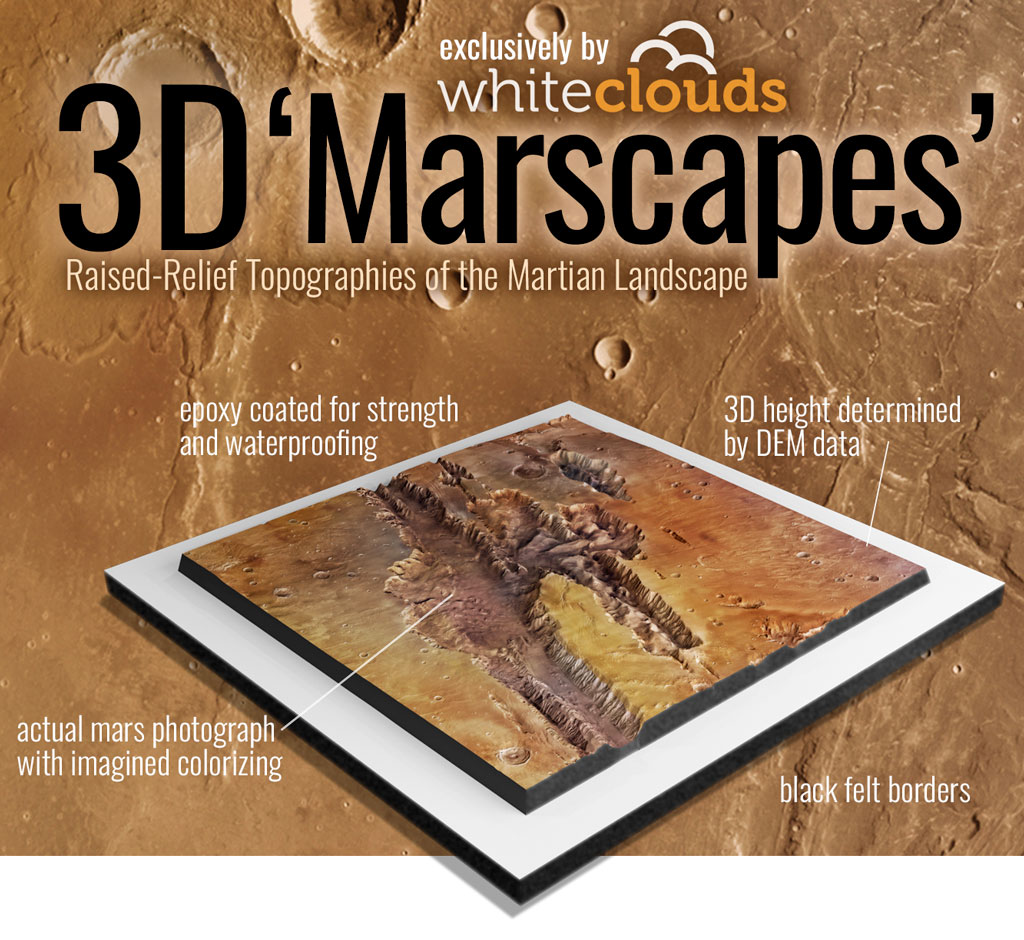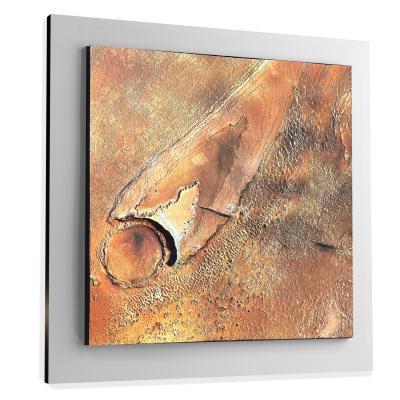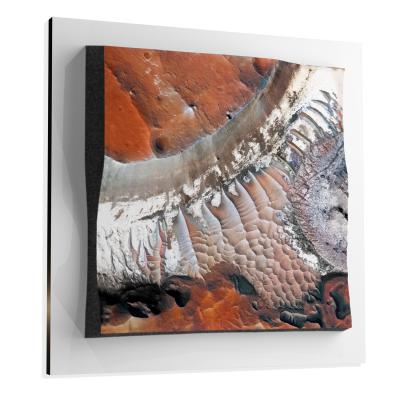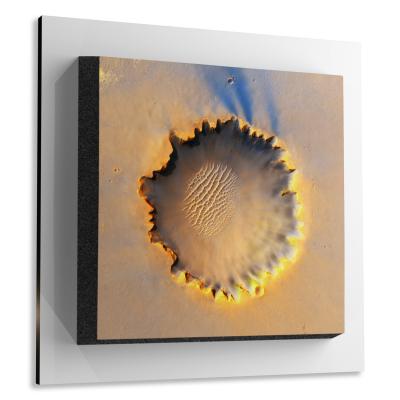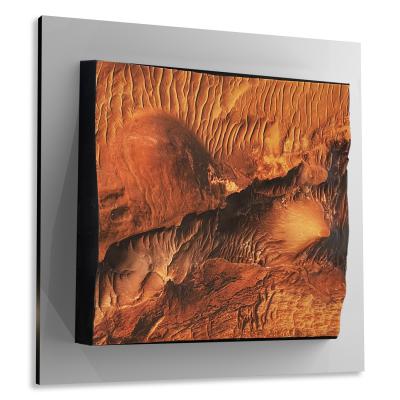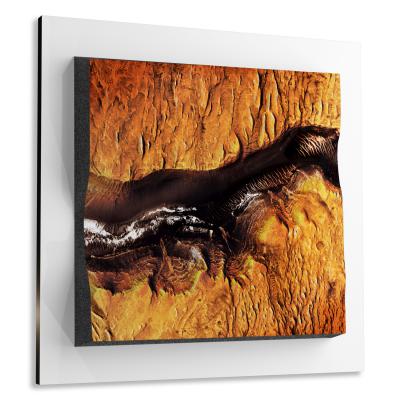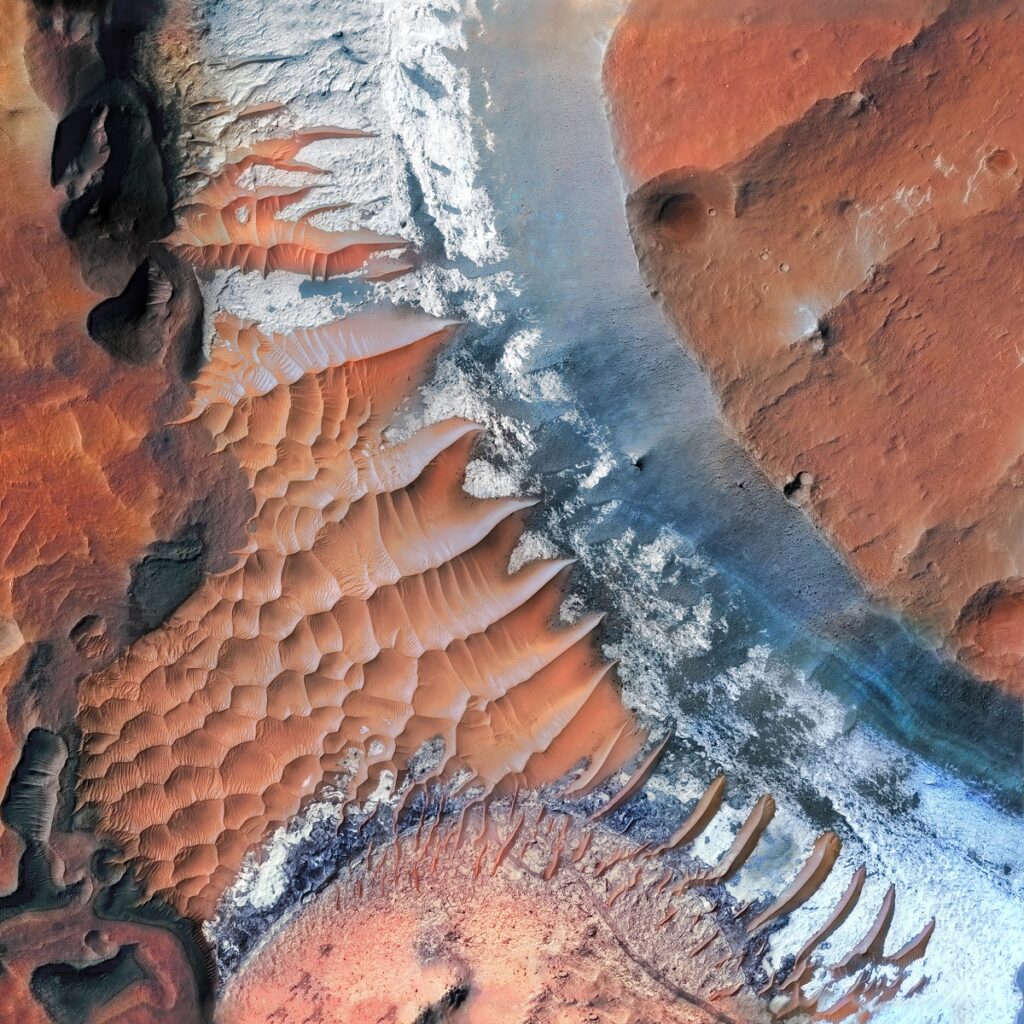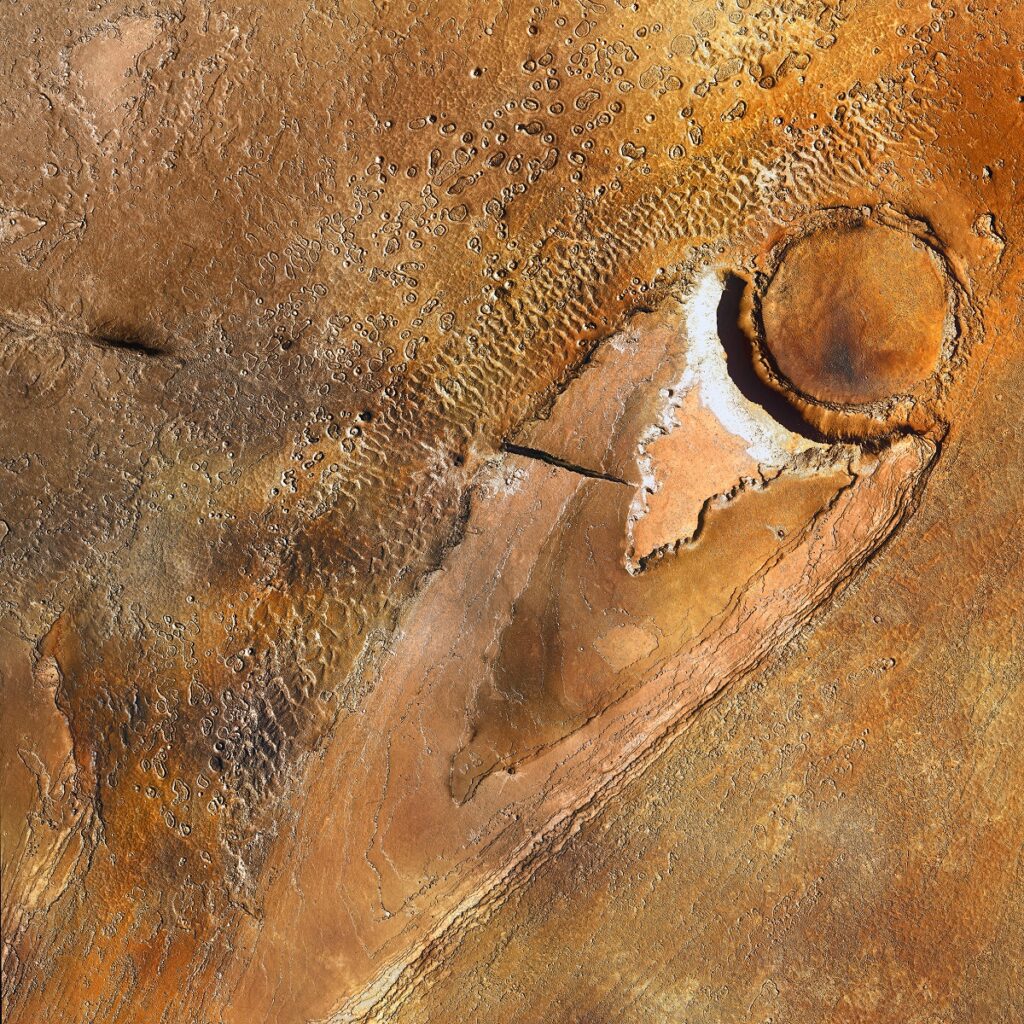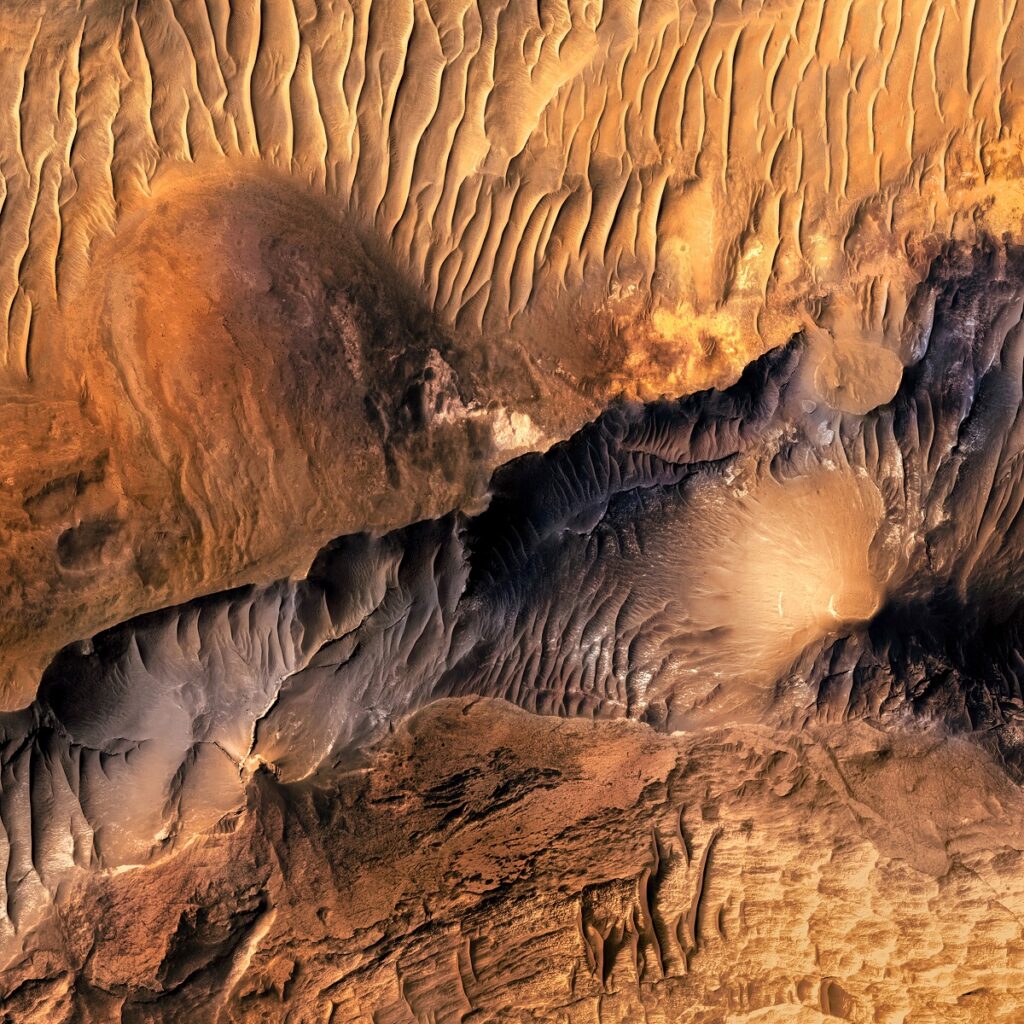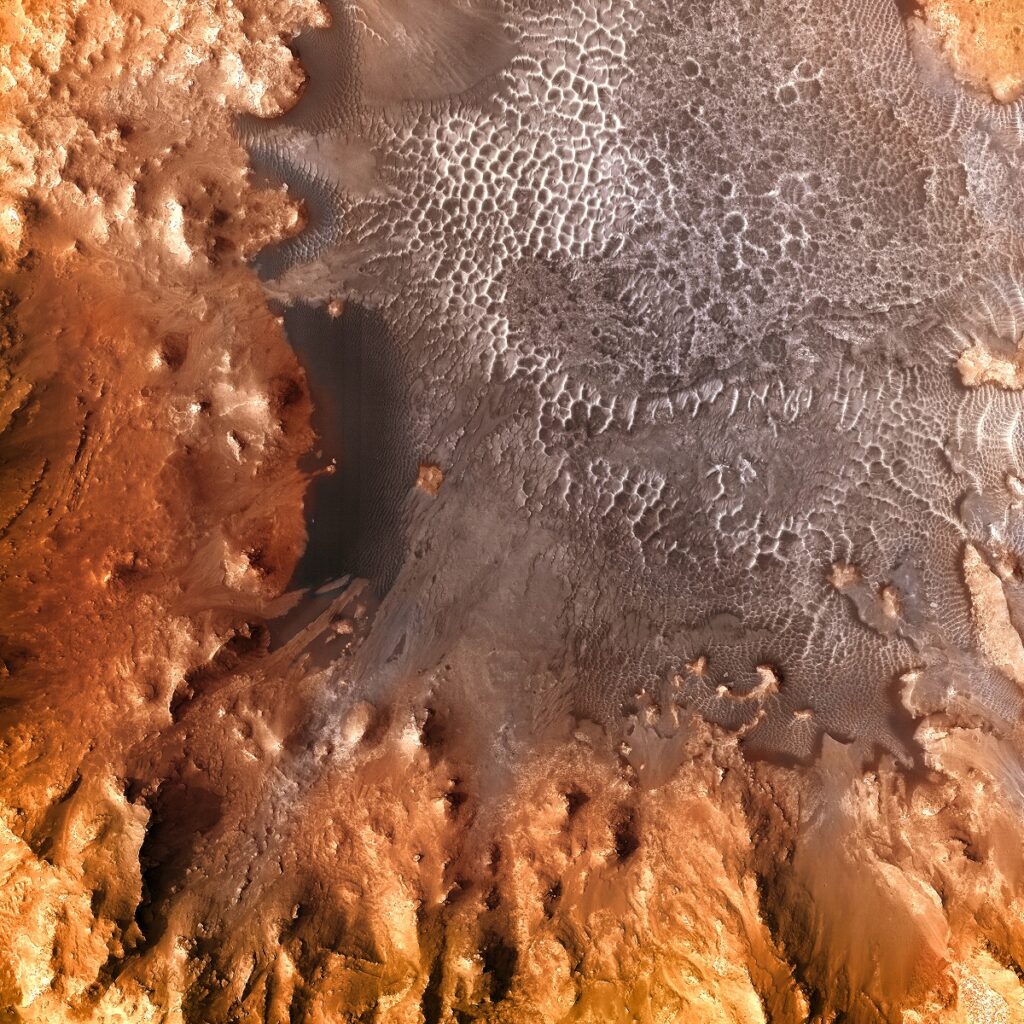Eridania Basin
Eridania Basin
We Build Custom 8K Mars Canvas Prints of Eridania Basin
Did you know we make
custom
8K Mars Canvas Prints
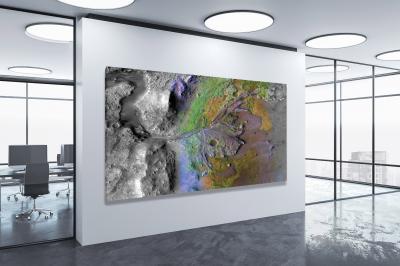
and
3D Marscapes
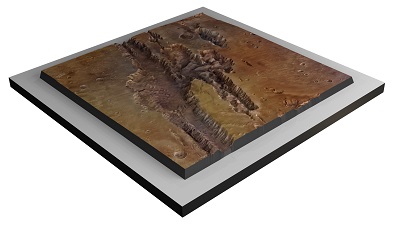
Eridania Basin
Eridania Basin is one of the most fascinating and mysterious geological features on Mars, drawing the attention of planetary scientists and geologists alike. Its immense significance lies not only in its sheer size and geological complexity but also in its potential to reshape our understanding of the Martian history, specifically concerning the presence of water.
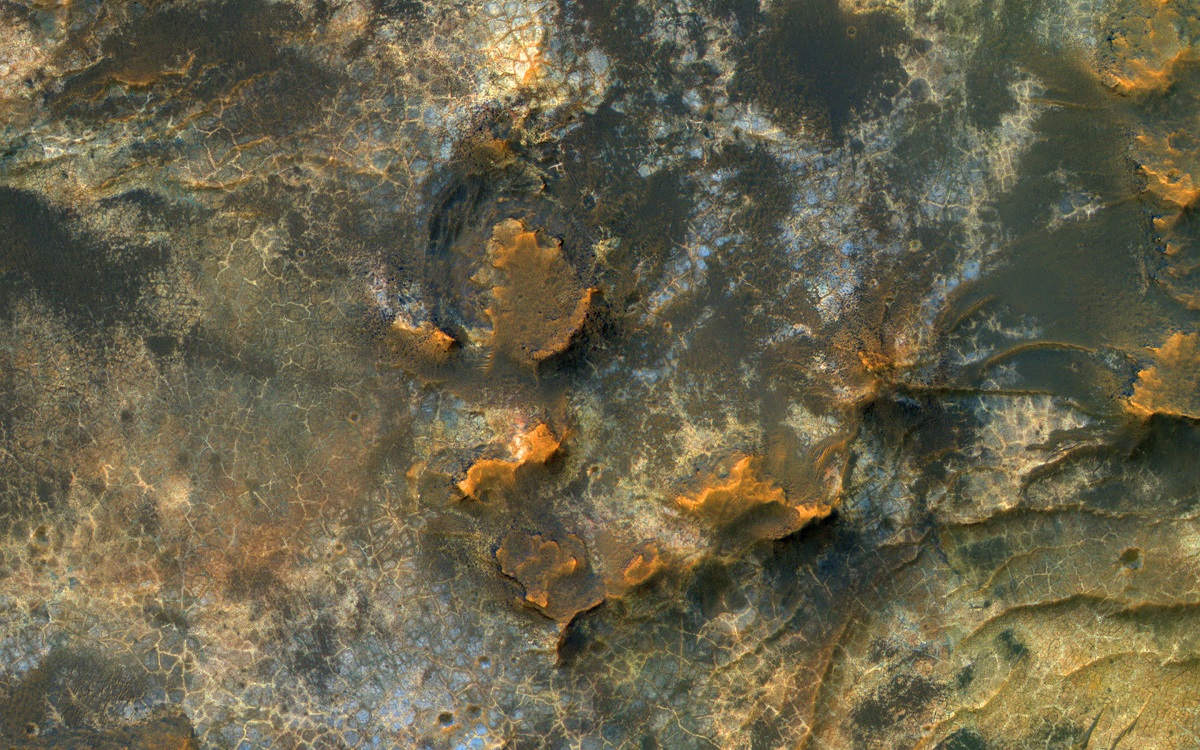 Clay-Rich Terrain in Eridania Basin
Clay-Rich Terrain in Eridania Basin
Geographical Location
Eridania Basin is a sprawling, geologically significant area in the southern highlands of Mars. The basin’s core is situated at approximately 34°S latitude and 141°E longitude, covering a vast expanse that totals around 1.5 million square kilometers. This makes it one of the largest known impact basins on the Martian surface. The basin is geographically framed by some of the most intriguing and distinct features on Mars; it is flanked to the west by the immense Hellas Basin, one of the largest impact craters in the solar system, and to the north by Tyrrhena Terra, a highland plateau noted for its rugged terrain. Its geographical positioning offers a fascinating window into Mars’ geologic evolution, marking a transitional zone that juxtaposes ancient, heavily cratered landscapes with less rugged terrains that may signify younger geological periods. Furthermore, the basin acts as a drainage basin for multiple Martian outflow channels, including Ma’adim Vallis, one of the largest of such channels on Mars. This aspect underlines the significance of Eridania Basin as a key element in understanding what is likely to have been an active Martian hydrological system in the distant past.
Advertisement
Sample Marscapes
Geological Composition
The geological makeup of Eridania Basin is both intricate and fascinating, continuing to be a subject of in-depth scientific inquiry. Initial observations indicate that the basin’s geological composition is a complex amalgamation of sedimentary and volcanic rocks. Basalts are predominant, likely originating from ancient volcanic activity on the Martian surface. However, what captures scientific imagination is the abundant presence of sulfates, clays, and possibly other hydrated minerals. These minerals usually form in environments rich in water, thereby bolstering the argument that the basin has an aqueous history. Additionally, sedimentary rocks found in the area appear to be layered, indicating a history of sequential deposition and erosion. This stratification suggests that over long geological timelines, multiple factors such as water, wind, or even glacial activities have played roles in shaping the basin’s terrain.
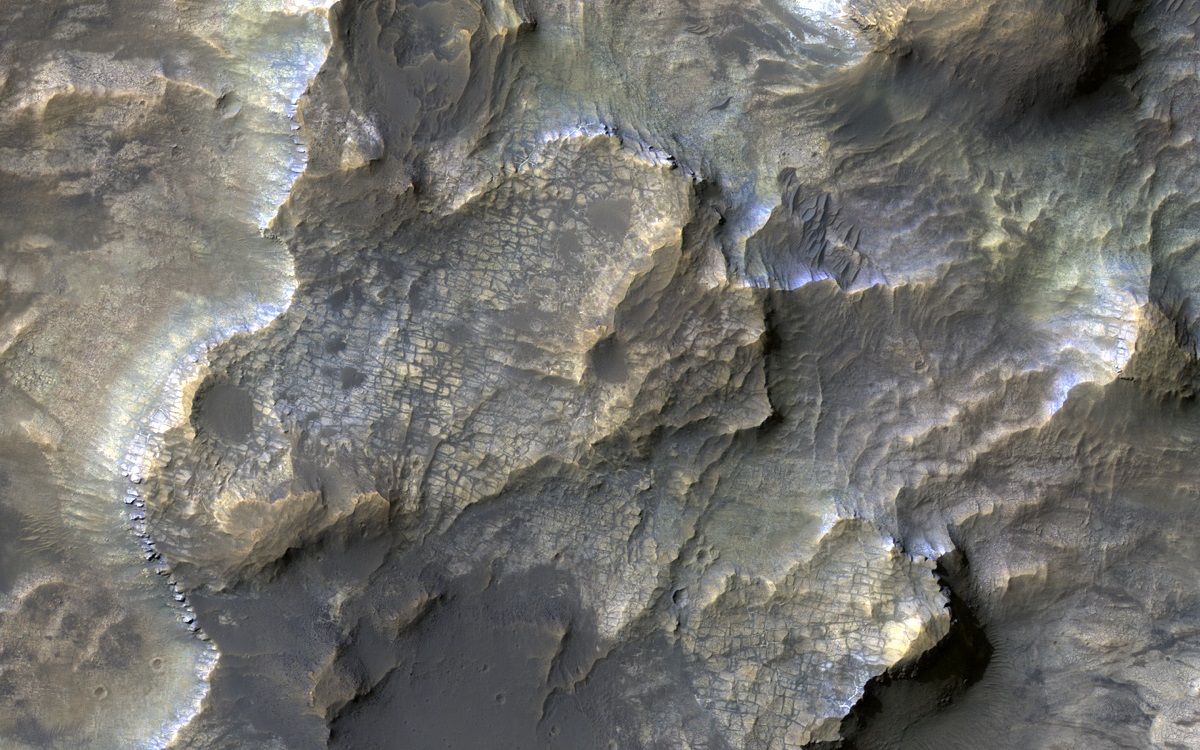 Clays in the Eridania Basin
Clays in the Eridania Basin
Significant Discoveries
Several groundbreaking discoveries have propelled Eridania Basin into the spotlight of Martian scientific research. One of the most monumental is the identification of what are believed to be ancient seabeds. Analyses suggest that Eridania Basin could have contained a staggering 210,000 cubic kilometers of water in its past, a volume that dwarfs the combined capacity of Earth’s Great Lakes by over nine times. Additionally, researchers have detected features that bear a striking resemblance to hydrothermal systems, akin to those found on Earth’s ocean floors. These hydrothermal systems are essential for the study of life’s origins and survival on Earth, raising intriguing possibilities for similar life-supporting conditions on ancient Mars. Alongside these discoveries, the identification of various mineral deposits like sulfates and clays further substantiates the water-rich history theory. These minerals are highly conducive to biological activity, providing even more tantalizing hints about the basin’s potential to have supported life.
Scientific Missions
A series of Martian missions have provided invaluable data that enrich our comprehension of Eridania Basin. NASA’s Mars Reconnaissance Orbiter (MRO) stands out for its role in capturing high-resolution imagery of the basin and in conducting advanced mineralogical analyses. Prior to MRO, the Mars Global Surveyor was instrumental in laying the groundwork by creating the first topographical maps that delineated the basin’s unique features. On the European front, the Mars Express mission has been pivotal in complementing these studies by providing high-resolution radar soundings and topographical imagery through its various instruments. Plans for future exploration involve missions that may employ in-situ sampling techniques, which could unveil unprecedented, fine-grained details about this complex and fascinating region.
Geomorphological Features
Eridania Basin’s geomorphological profile is a diverse tapestry that mirrors its complex geological history. The basin floor is a mesmerizing interplay of layered sedimentary deposits, sinuous channels, and structures resembling ancient river deltas. These features collectively suggest a history of water movement and sediment transport, likely contributing to the basin’s current form. The vertical profiles of the basin, including its walls, show evidence of scarps, terraces, and other erosional features, potentially shaped by water or other erosional forces such as wind. Moreover, there are impact craters within the basin that appear to have undergone processes of infilling and subsequent erosion, further evidence of a dynamic geological history. These craters serve as time capsules, offering clues to understanding the sedimentary processes and the basin’s transformation over time.
Eridania Basin is a gem on the Martian landscape, providing a window into the planet’s intriguing past. Its geological, mineralogical, and geomorphological features offer compelling evidence for a history rich in aqueous activity. As a focal point of scientific inquiry, the basin has the potential to answer some of the most fundamental questions about Mars: its geological history, its past climate, and even the tantalizing possibility of life. As technology advances and future missions reach Mars, Eridania Basin will undoubtedly remain at the forefront of interplanetary scientific exploration.
More About Mars
Contact us today to learn more about our 3D services and how we can help you achieve your goals.
